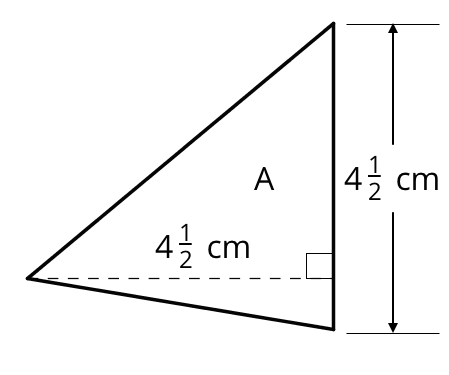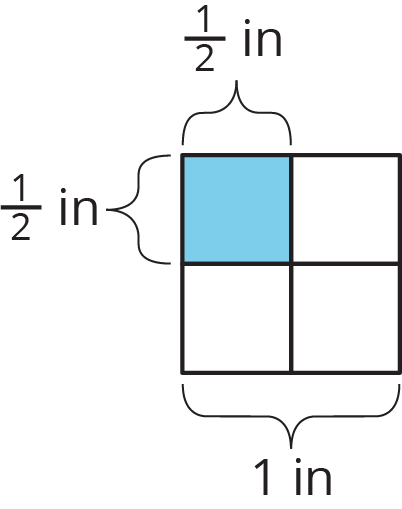Lesson 10
Rectangles and Triangles with Fractional Lengths
10.1: Areas of Squares

- What do you notice about the areas of the squares?
- Kiran says “A square with side lengths of \(\frac13\) inch has an area of \(\frac13\) square inches.” Do you agree? Explain or show your reasoning.
10.2: How Many Would it Take? (Part 2)
Noah would like to cover a rectangular tray with rectangular tiles. The tray has a width of \(11\frac14\) inches and an area of \(50\frac58\) square inches.
- Find the length of the tray in inches.
- If the tiles are \(\frac{3}{4}\) inch by \(\frac{9}{16}\) inch, how many would Noah need to cover the tray completely, without gaps or overlaps? Explain or show your reasoning.
- Draw a diagram to show how Noah could lay the tiles. Your diagram should show how many tiles would be needed to cover the length and width of the tray, but does not need to show every tile.
10.3: Bases and Heights of Triangles
-
Find the area of Triangle A in square centimeters. Show your reasoning.

-
The area of Triangle B is 8 square units. Find the length of \(b\). Show your reasoning.

-
The area of Triangle C is \(\frac{54}{5}\) square units. What is the length of \(h\)? Show your reasoning.

Summary
If a rectangle has side lengths \(a\) units and \(b\) units, the area is \(a \boldcdot b\) square units. For example, if we have a rectangle with \(\frac12\)-inch side lengths, its area is \(\frac12 \boldcdot \frac12\) or \(\frac14\) square inches.

This means that if we know the area and one side length of a rectangle, we can divide to find the other side length.

If one side length of a rectangle is \(10\frac12\) in and its area is \(89\frac14\) in2, we can write this equation to show their relationship: \(\displaystyle 10\frac12 \boldcdot {?} =89\frac14\)
Then, we can find the other side length, in inches, using division: \(\displaystyle 89\frac14 \div 10\frac12 = {?}\)